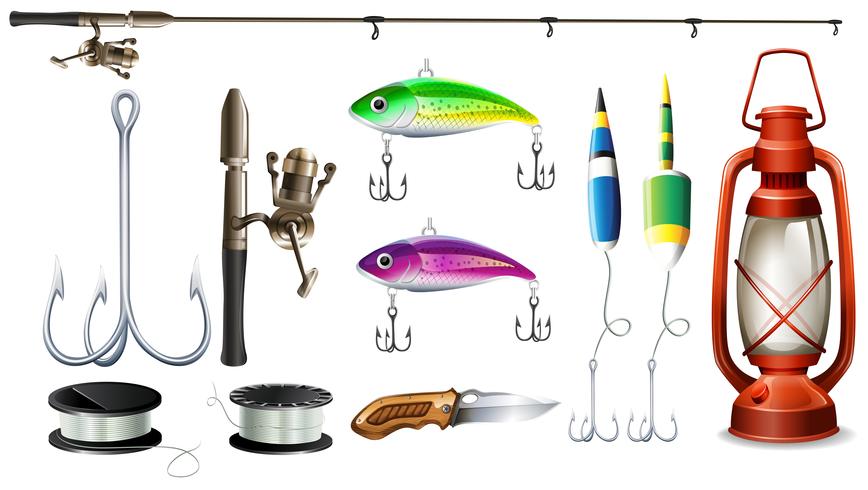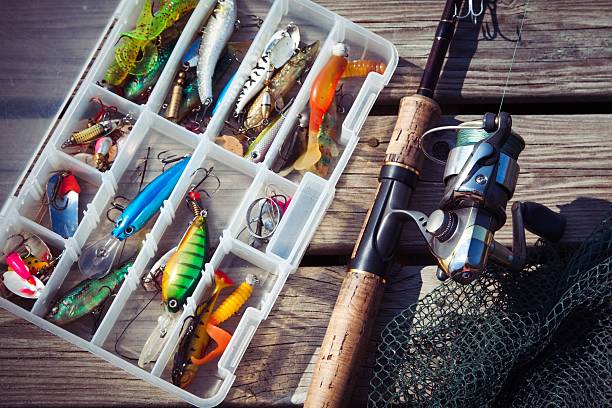A detailed beginner’s guide to Xplorer Fly Fishing techniques and setup
Wiki Article
The Full Guide to Fishing Fishing: Lures, Tackle, and Fly Fishing Basics for All Skill Levels
The Total Guide to Fishing Fishing uses a comprehensive consider important equipment for fishermens at any level. It covers different baits, tackle elements, and fly angling essentials. Comprehending these aspects is essential for a successful fishing experience. The overview likewise emphasizes the importance of seasonal methods and correct equipment upkeep. As fishermens navigate their options, they may question which certain things will absolutely enhance their fishing adventures.Comprehending Different Kinds Of Fishing Lures
A range of angling lures exist, each created to draw in certain sorts of fish. All-natural lures, such as worms, minnows, and pests, mimic the fish's natural diet, making them effective for many varieties. For instance, nightcrawlers are preferred for fresh water angling, while minnows attract in bigger fish like bass and pike.Fabricated lures, consisting of appeals and jigs, are crafted to mimic the movement and look of target. These can vary from brilliantly colored plastic worms to realistic crankbaits designed to mimic swimming fish.
An additional group is scent-based baits, which utilize smells to draw in fish from a distance. These baits are specifically helpful in dirty waters.
Inevitably, the choice of bait depends upon the target types, water conditions, and fishing strategy, making it crucial for fishermens to understand their alternatives and choose the most effective lure for their certain angling scenario.
Vital Fishing Tackle: Rods, Reels, and Lines
While picking the best angling deal with, understanding the interaction in between poles, reels, and lines is vital for effective angling. Fishing poles been available in numerous lengths and activities, each created for specific fishing strategies and species. A much shorter rod provides far better control for close-in fishing, while longer poles enable higher casting distance.Reels, readily available in spinning, baitcasting, and fly alternatives, should match the pole and line type to assure smooth operation. The option of reel significantly influences the angler's capability to retrieve catches effectively.
Lines, categorized by material and toughness, work as the connection in between the fish and the rod. Monofilament, fluorocarbon, and knotted lines each deal distinct advantages, affecting exposure and level of sensitivity. Picking the suitable mix of reel, line, and pole is necessary, as it straight influences casting performance, level of sensitivity to attacks, and total angling success. Each component must work sympathetically to enhance the angling experience.
Picking the Right Fishing Lures for Your Target Species
Selecting the suitable angling tempts requires a keen understanding of the preferences of target varieties - Xplorer Fly Fishing. Factors such as water conditions and regional forage play a significant function in establishing which tempts will be most effective. By aligning attraction choice with these variables, anglers can boost their possibilities of success on the waterUnderstanding Variety Preferences
Picking the ideal angling draws needs an understanding of the certain choices of target types, as various fish are drawn in to varying sizes, shades, and activities. Bass are frequently drawn to intense, fancy attractions that mimic their all-natural target, while trout may choose more refined, natural colors. In addition, the size of the attraction must match the size of the fish being targeted; bigger types generally respond much better to bigger appeals. Movement also plays a vital duty; some fish are drawn in to appeals that simulate erratic actions, while others choose a steady, smooth retrieve. By identifying these preferences, fishermens can successfully increase their opportunities of a successful catch, customizing their tackle to the one-of-a-kind features of each types.Matching Lures to Conditions
The performance of fishing attractions often rests on the prevailing environmental problems. Anglers must think about variables such as water temperature, clearness, and existing when choosing the ideal lure. As an example, in murky waters, noisy or brilliant attractions tend to stand out, while in clear conditions, even more subtle movements and natural shades work. Seasonal modifications likewise play a crucial role; throughout spawning periods, fish might react better to appeals resembling their prey. In addition, time of day influences fish task; dawn and dusk are prime-time televisions for making use of topwater lures. Ultimately, comprehending these conditions permits anglers to match their appeals to the target varieties, improving their possibilities of an effective catch. Expertise of environmental dynamics is key to efficient appeal option.The Basics of Fly Fishing Equipment
A solid understanding of fly fishing equipment is necessary for both newbies and seasoned anglers alike. The essential parts of fly fishing gear consist of the fly pole, reel, line, and flies. The fly pole, usually longer and much more flexible than typical angling rods, permits accurate spreading. Picking the ideal rod depends upon the angling setting and target types.The reel, developed to hold the fly line, plays a substantial function in taking care of line access and drag. Fly lines are specialized for numerous methods, from drifting to sinking, and should be matched to the rod's requirements.
Finally, flies copy aquatic pests and lure fish, and can be found in numerous styles such as completely dry flies, fairies, and streamers. Choosing the proper fly is essential, as it needs to match to the local fish species and problems. Mastery of these standard elements develops the structure for effective fly fishing experiences.
Tips for Organizing Your Fishing Tackle Box
Organizing an angling tackle box can significantly boost a fishermen's performance on the water. By sorting deal with by type, utilizing containers effectively, and classifying whatever clearly, anglers can rapidly access their equipment. These approaches not only conserve time yet additionally ensure that essential items are always handy when required.
Kind by Type
Arranging tackle by kind assurances that fishermens can rapidly situate the gear they require when the excellent fishing possibility occurs. Organizing things such as hooks, lures, and sinkers right into designated areas enhances effectiveness and minimizes irritation during getaways. For circumstances, categorizing lures by kind-- online, synthetic, or iced up-- permits swift decisions based upon fishing conditions. Tackle boxes can be split right into that site compartments for simple access to specific gear, such as fly fishing fundamentals or deep sea equipment. This method not just saves time but also helps in maintaining the condition of the take on, making sure whatever remains in ideal form. By executing this organized method, anglers can concentrate much more on the angling experience as opposed to looking for misplaced products.
Usage Containers Carefully
Utilizing containers successfully can substantially enhance the company of an angling tackle box. Anglers need to consider using a range of containers, such as tiny deal with trays, zip-lock bags, and compartmentalized boxes, to separate different types of gear. When looking for particular products yet additionally stops tangling and damage, this approach not just saves time. Lures, hooks, and weights can each have designated containers, helping with easy access during angling journeys. In addition, clear containers permit fast exposure of components, improving the selection process. It is additionally valuable to ponder the shapes and size of containers to optimize area within the deal with box. By implementing these business approaches, fishermens can keep a much more efficient and delightful angling experience.Label Everything Plainly
Clear labeling is necessary for preserving an organized angling tackle box. By plainly marking containers and areas, anglers can conveniently find specific things, saving time and lowering stress during angling journeys. Utilizing water resistant tags warranties toughness in various weather. It is recommended to classify things such as hooks, lures, and line types, giving fast gain access to when needed. In addition, color-coded labels can improve presence and organization. Routinely upgrading labels as products change helps keep an efficient system. When fishing with others, clear labeling is particularly beneficial, permitting easy sharing and understanding of deal with plans. Ultimately, a well-organized deal with box with clear labels promotes a more satisfying and successful fishing experience.Seasonal Fishing Techniques and Equipment Adjustments
As the seasons adjustment, anglers must adapt their methods and gear to maximize their possibilities of success. In spring, as an example, fish become much more energetic as water temperatures increase, triggering fishermens to use lighter deal with and lively lures to tempt attacks. During summer season, the warm pushes fish to deeper waters, necessitating larger equipment and strategies such as deep-water or trolling jigging.In autumn, as fish prepare for wintertime, fishermens ought to concentrate on areas with abundant food sources, utilizing bigger lures to attract them. Winter angling frequently requires specific equipment, including ice angling equipment and warm garments, as fish end up being lethargic in chilly water.
Additionally, changes in line choice, attraction color, and lure kind are crucial throughout the year (Xplorer Fly Fishing). By staying attuned to seasonal patterns and making these equipment adjustments, anglers can enhance their performance and appreciate a worthwhile angling experience despite the moment of year
Upkeep and Look After Your Fishing Equipment
Appropriate maintenance and treatment for angling equipment are important for assuring durability and top efficiency. Anglers need to frequently examine their rods, reels, and lines for indicators of wear, such as fraying or rust. Cleansing equipment after each fishing trip is important; freshwater must be made use of to rinse salt and debris, avoiding corrosion and build-up.Reels need lubrication to preserve smooth procedure; applying the proper oil to relocating parts can improve their lifespan. Rod overviews ought to be looked for cracks or chips, as they can affect spreading and line honesty.
Saving gear in a completely dry, temperature-controlled setting helps prevent damages from moisture or extreme temperature levels. Additionally, replacing old or damaged tackle, such as hooks and appeals, assurances ideal performance throughout fishing trips. By sticking to these maintenance methods, fishermens can significantly prolong the life of their equipment and enjoy a more effective fishing experience.
Frequently Asked Concerns

What Are the most effective Regional Fishing Areas for Beginners?
The most effective regional fishing places for newbies typically consist of tranquil lakes, quickly available rivers, and designated angling ponds. Entertainment areas and local parks frequently supply safe atmospheres with plentiful fish populaces, making them ideal for newbie fishermens.How Can I Determine Fish Types in My Area?
To identify fish species in a location, one can observe physical attributes, get in touch with regional area guides, utilize mobile phone apps, or engage with regional angling areas for insights and recognition suggestions details to the region.directory
What Licenses Do I Required for Fishing?
To fish lawfully, one normally needs an angling certificate, which differs by area. In addition, some areas may need particular permits for certain species or fishing methods, stressing the see this here relevance of examining neighborhood laws prior to angling.How Do Weather Conditions Affect Fishing Success?
Weather considerably influence fishing success. Elements such as temperature, rainfall, and wind influence fish habits, feeding patterns, and environment. Anglers typically adapt their methods based on these problems to boost their opportunities of a successful catch.What Are Common Fishing Rules Policies to Adhere To?
Usual fishing etiquette guidelines include appreciating others' area, staying clear of sound, cleansing up after oneself, following local regulations, and practicing catch and release when appropriate. These standards cultivate a harmonious atmosphere for all anglers.Fishing rods come in different lengths and actions, each designed for particular fishing techniques and species. A solid understanding of fly angling equipment is crucial for both beginners and skilled fishermens alike. Organizing an angling deal with box can considerably improve an angler's efficiency on the water. Sorting take on by kind guarantees that anglers can quickly situate the equipment they need when the ideal fishing possibility develops. The finest local fishing places for novices usually consist of calm lakes, easily obtainable rivers, and marked fishing ponds.
Report this wiki page